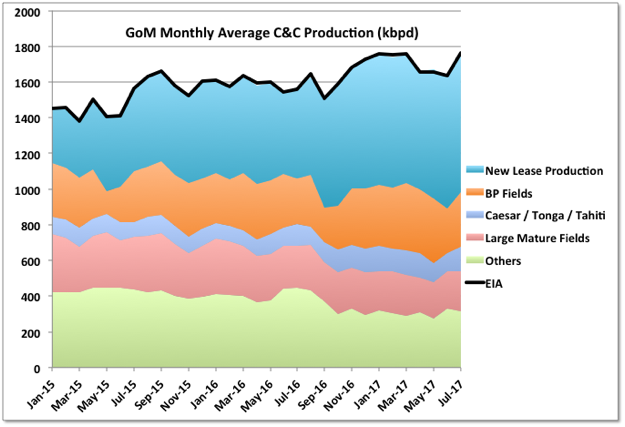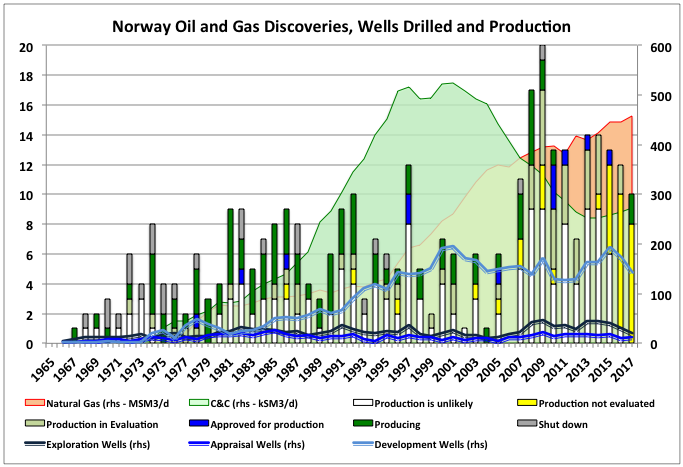Comments not related to oil and natural gas in this thread please.
Category: Uncategorized
Norway and UK Production Update
A Guest Post by George Kaplan
Short-term trends for UK oil and gas production and, to a lesser extent, Norway can be rendered a bit meaningless by seasonal impacts from summer maintenance turn-arounds and cyclic gas demand. Overall, though, both are at or approaching the tail end of the production curve, but with slight upticks in the nearer term. Barring several large and unlikely new discoveries over the coming years the industry will continue winding down in both countries, with the UK ahead of Norway, and exploration and development leading operations and finally decommissioning. However some Norwegian gas production still has a multi-decade plateau to come and there are a couple of large oil projects due on-line in each country which will run for twenty to thirty years.
Norway Drilling and Discoveries
Open Thread: Non-Petroleum, November 8, 2017
Comments not related to oil and natural gas in this thread please.
Open Thread Petroleum, November 2, 2017
Comments related to oil and natural gas in this thread please.
Any Non-Petroleum comments should go under the Electric Power Monthly post below. Thanks.
GoM July Production Update
A Guest Post by George Kaplan
GoM C&C production for July by BOEM was 1746 kbpd and by EIA 1761, compared with, respectively, 1631 and 1634 kbpd (corrected) in June. The EIA number is a new peak, the BOEM one is still 24 kbpd short of their March numbers. The growth was from Thunder Horse (partially), Constitution and Baldpate/Salsa (which is mostly gas) coming back on-line, plus continued ramp-up in Stones and Marmalard.

